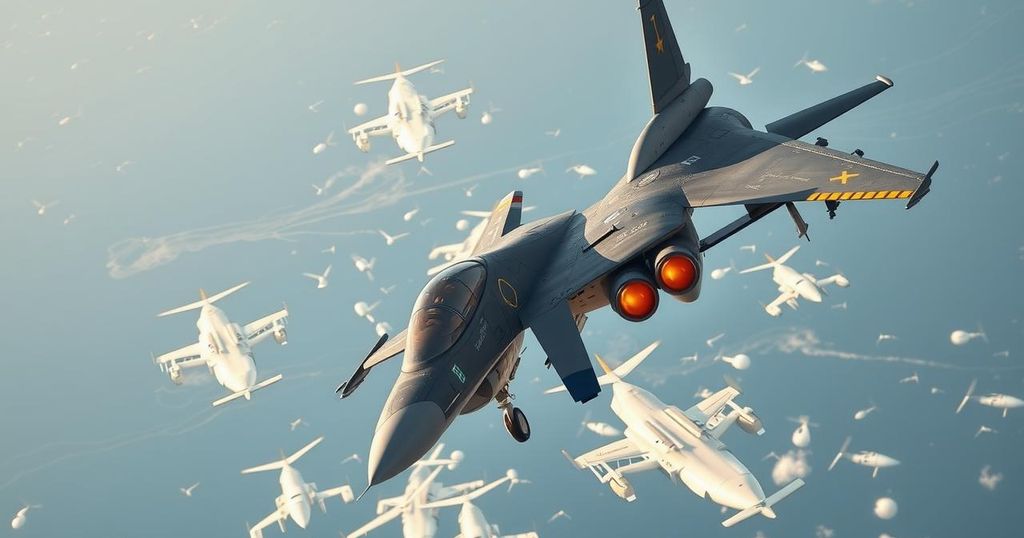Tensions in Syria are escalating into a potential NATO conflict as the U.S. shoots down a Turkish Bayraktar TB2 drone, revealing fractures in ally cooperation. The Syrian Democratic Forces have been successful in countering Turkish drone operations, with incidents highlighting the competing interests of the U.S. and Turkey, despite their NATO alliance. Increased U.S. military presence suggests a strategic shift amid ongoing confrontations, raising concerns over the fragile dynamics within NATO.
The evolving conflict in Syria has begun to resemble a NATO versus NATO confrontation, particularly with the recent incident involving a U.S. F-16 shooting down a Turkish Bayraktar TB2 drone. The Syrian Democratic Forces (SDF) announced the success of taking down the drone near the Karakozak Bridge in northern Raqqa, signaling heightened tensions between the U.S. and Turkey. The continued efficacy of the SDF in neutralizing Turkish aerial threats suggests a significant shift in the dynamics of military operations in the region, where allied forces may find themselves in direct conflict due to conflicting interests.
The SDF Media Center stated, “At exactly 1:00 PM this afternoon, our fighters successfully downed a Turkish Bayraktar TB2 drone in the Karakozak Bridge area.”, illustrating the increasing effectiveness of the SDF against Turkish drones. This incident is the third drone the SDF has shot down within the past month, demonstrating their growing capabilities in aerial defense. The situation is compounded by the strategic involvement of the U.S. military, which has recently bolstered its presence in northern Syria, amid concerns over the tensions between its operations and Turkish objectives in the area.
Additionally, the October 2023 incident, where a U.S. F-16 intercepted a Turkish drone reportedly targeting Kurdish YPG forces, marked an unprecedented use of military force between NATO allies. U.S. officials emphasized that efforts were made to redirect the drone prior to the engagement, indicating a complex layer of cooperation and conflict dynamics between the two nations. Turkey’s denial of ownership of the drone raises further questions about accountability and the state of NATO’s collective operations in Syria.
The volatility in the region has been further exacerbated by the SDF’s accusations against Turkey for violations of a U.S.-brokered ceasefire agreement, where the SDF detailed an escalation of aggression by Turkey and its allies. Despite the U.S. maintaining a role as a mediator, the persistence of the conflict hints at a precarious balance of power amid competing strategic alliances. The U.S. Department of Defense confirmed the ongoing ceasefire in the Manbij region, reinforcing the complicated nature of U.S. involvement in the region where its strategic interests may clash with those of a NATO ally.
In light of these developments, the U.S. military’s increase in troop presence near Kobani signifies potential shifts in operational strategy, possibly aiming at establishing a stronghold amidst escalating confrontations. As the situation in northern Syria unfolds, the risk of a direct confrontation between NATO members remains an acute concern, prompting reflection on the integrity of NATO as a collective defense alliance.
The ongoing Syrian conflict has seen various international players involved, particularly the United States and Turkey, both NATO allies. The U.S. has supported the Syrian Democratic Forces (SDF), a Kurdish-led group opposed to the Turkish government’s actions in the region, thereby complicating alliances and engagements. The Turkish Bayraktar TB2 drone, known for its advanced capabilities, has been a pivotal asset for Turkey in various operations but has increasingly faced challenges from forces supported by the U.S., raising questions about NATO’s cohesion amid conflicting operational objectives in Syria. Recent military incidents, including drone shootdowns and troop deployments, highlight the intensifying friction between these two NATO members, as both vie for control and influence in this strategically crucial region.
The recent downing of a Turkish drone by U.S.-backed Syrian forces marks a significant escalation in the complex dynamics of NATO involvement in Syria. The incidents not only underline the growing effectiveness of the SDF but also raise pressing questions about the future of allied relations in a context where conflicting interests could lead to further military engagements. As tensions rise, the need for clear communication and tactical alignment within NATO becomes increasingly critical to prevent potential conflict between member states in the field.
Original Source: www.india.com






